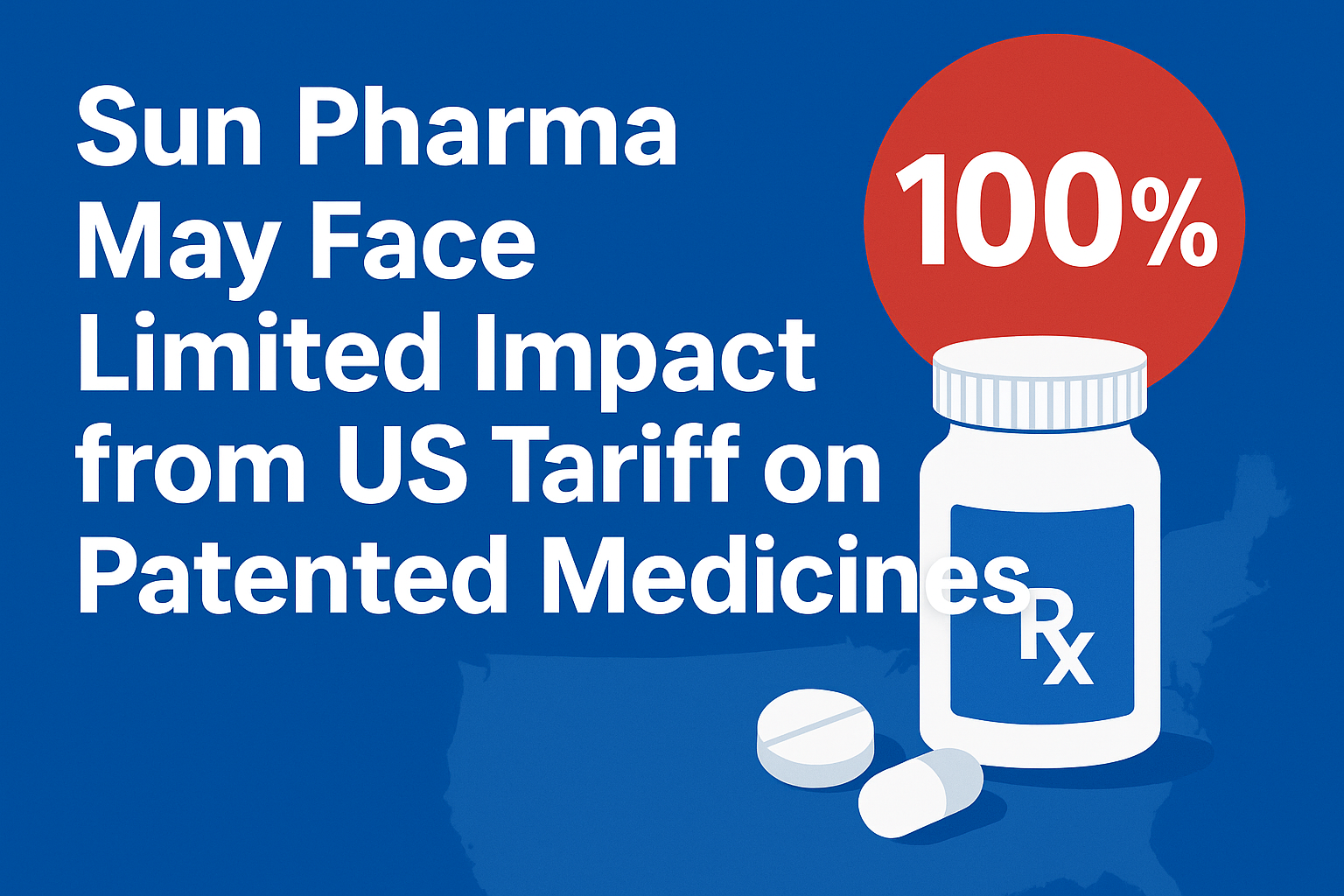US Slaps 100% Tariff on Patented Drugs
The United States has announced a 100% tariff on imports of branded and patented medicines from October 1. Generic and off-patent products will remain exempt. The move aims to push drugmakers to shift production to domestic facilities.
Sun Pharma’s Exposure
Analysts say Sun Pharmaceutical Industries could feel some pressure as it earns nearly 17% of its FY25 revenue from patented medicines in the US market. Patented drug sales contribute almost 8–10% to its consolidated earnings per share.
You can read more about Sun Pharma’s global expansion strategy and its performance in the US market.
Why Analysts Expect a Limited Hit
Experts believe the impact on Sun Pharma will remain contained. The company has options to pass on part of the cost to consumers or insurers. It can also explore shifting production to the US or to contract manufacturers with American operations.
Relocating manufacturing could take between 6 and 24 months. The process will require capital and regulatory approvals, but Sun Pharma has a strong balance sheet. The company holds around USD 3 billion in cash reserves, which can support new investments.
For other Indian drugmakers, the impact is expected to be minimal. Most of them focus on generics, which fall outside the scope of the new tariff. Learn more about India’s generic drug exports.
Risks and Opportunities
Analysts caution that Sun Pharma’s margins may come under short-term pressure. Passing on costs may not be fully possible because of regulatory and competitive factors. Any delay in shifting manufacturing could also affect profitability.
At the same time, Sun Pharma’s financial strength and partnerships may help it adapt. If it expands production within the US, it could even strengthen its market position in the long run.
Outlook
Market watchers will track Sun Pharma’s next steps closely. The company’s ability to navigate tariffs, protect margins, and sustain its patented drug portfolio in the US will decide the real impact of this policy shift.

